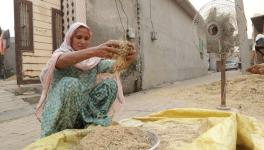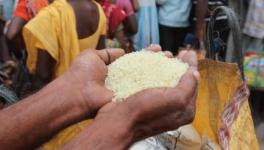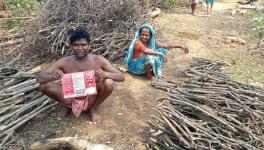Jharkhand: Giridih Saves its Village Ponds With NITI Aayog's Help
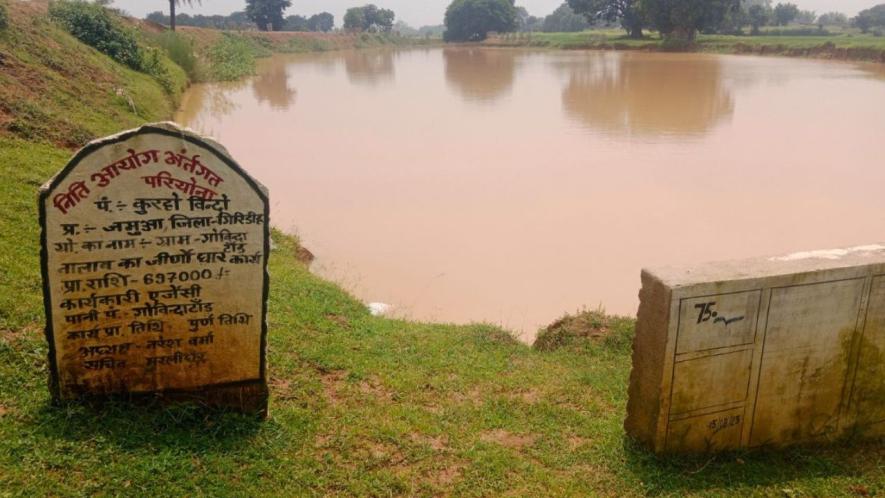
New ponds of Giridih (Photo - Rahul Singh, 101Reporters)
Giridih, Jharkhand: Standing next to a pond in his village Govindatand in Jharkhand’s Giridih district, Dego Mahto (72) describes the vital role this water body plays in the lives of the residents.
“During July-August, we fully used up the pond water twice. When it rained again, the pond filled up again," he says.
Rich in forest resources and having mostly plateau terrain, Jharkhand receives about 1,200 mm of rainfall every year. Giridih district falling in North Chota Nagpur division receives an average of 1,189 mm of rainfall, with the month of July seeing a maximum of 307.7 mm of rainfall. However, the uncertainty of rainfall has increased in the last few years.
During the monsoon months, cases of heavy rainfall on a single day and no rainfall for several days are increasing. Throughout the year, there is uncertainty over rainfall, and threat of excessive rainfall or drought. Moreover, plateau terrain makes surface runoff more pronounced.
Ponds of Giridih had remained stagnant until last year, until a grant from NITI Aayog helped revive them. For the first time in about 25 years, the old pond of Govindatand was renovated.
“Our committee ensured that the repair was successful. Water-holding capacity has increased following the removal of accumulated silt. However, the pond’s eastern end sees erosion. If a retaining wall is built around the pond, water loss and the resultant soil erosion can be stopped. The village has one more pond, so we are also seeking funds for renovating it,” says Govindatand pani panchayat samiti secretary Muralidhar Verma (52).
"Silt was removed just before the onset of monsoon rains. Farmers used it as manure in their fields. They also built field embankments using it,” says Ramdev Verma (47), who notes that River Usri flows three km away from the village, so they do not get any benefit from it for irrigation.
Pramila Devi (45) says the pond has been of great use to them ever since it was restored. “We could cultivate paddy due to this pond.”
The backward Koeri community occupying the village are mostly agrarian, with people owning two to four bighas of land.
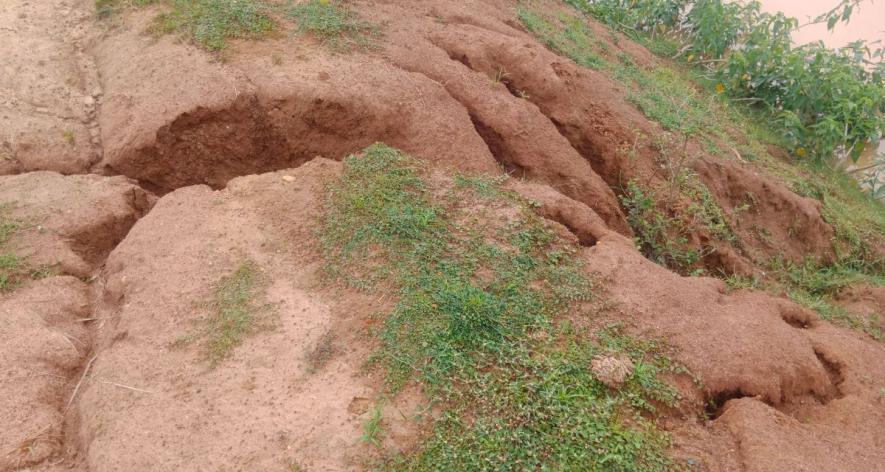
Crack on the pond wall (Photo - Rahul Singh, 101Reporters).
How it came about
The pond renovation came about after NITI Aayog proposed to different districts to work in different areas such as education, health, water bodies and livelihood.
"NITI Aayog had sent a proposal to many districts, including ours, to do some unique work. We chose to work in the area of water conservation," Aszadullah, project coordinator, District Mineral Foundation Trust, Giridih, tells 101Reporters. Similarly, Bokaro, Garhwa and Palamu districts chose to work on its water bodies.
"As per the NITI Aayog proposal, we had to implement 67 modules [a water conservation unit] on old ponds in the district to increase their holding capacity. With the implementation of one module, 10,000 cubic meters of water can be stored in ponds. In some cases, we implemented two modules in one pond and three modules in different blocks. In all, 57 ponds were renovated, of which 52 were in 2023 and five in 2024,” notes Aszadullah.
After this work, the water bodies in the district could store 67 crore litres of rainwater, benefiting 1,17,625 people, he adds.
Under the Birsa Harit Gram Yojana, fruit-bearing and other types of trees were planted around the 52 water bodies that were part of the first phase. The responsibility of these ponds lies with the village pani panchayat samiti, which has a president, a secretary and members. Pani panchayats were formed in Jharkhand following a notification from the state agriculture department in 2011.
Generally, one module was adopted in ponds of one to three acres size, while two modules were adopted in ponds above that size. Giridih district received a budget of Rs 2.10 crore from NITI Aayog for the work.
Partnership mode
NITI Aayog and the district administration took help from A.T.E. Chandra Foundation for implementing the Rejuvenation of Waterbodies in Aspirational Districts Programme.
According to foundation representative Akshay Chauhan, the programme was initially run on six ponds in the country, which included those in Baran and Sirohi districts of Rajasthan, and Rajgarh and Chhatarpur districts of Madhya Pradesh. Last year, NITI Aayog decided to expand the programme, under which work started in four districts of Jharkhand.
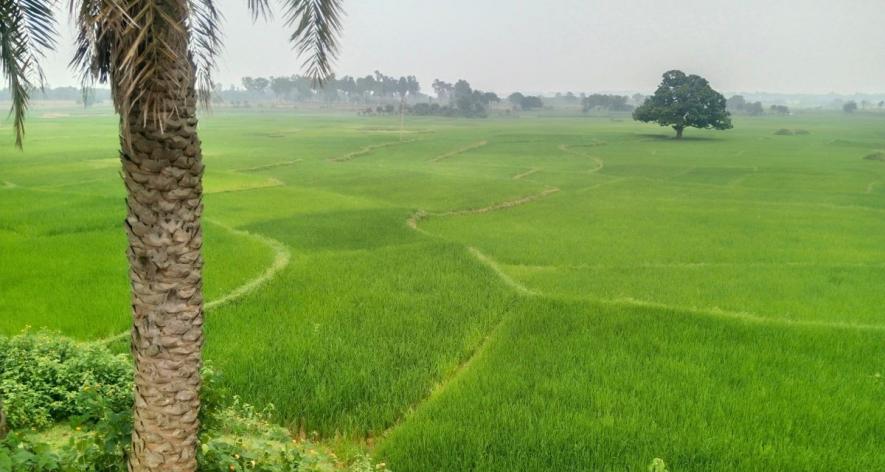
Farm land in Govindatand village (Photo - Rahul Singh, 101Reporters)
Rajeev Singh of Nav Bharat Jagriti Kendra, the local NGO partner of A.T.E. Chandra Foundation in Giridih, informs that the project details are available on the foundation’s Avni app. “We do MIS entry for this. We also ensure that the villagers understand the programme benefits, so as to motivate them to save ponds and generate employment options through them.”
He adds that farmers are not only irrigating their grain crops using pond water, but also growing vegetables. Fish farming is another option.
“Many villagers who came home during the COVID-19 lockdown did not migrate for work again. If there are options nearby, they would prefer to stay in the village itself," he notes, adding that this project’s impact on migration is not fully known yet.
Singh says that they have managed to educate villagers on the benefits of silt. "Earlier, they considered pond silt as useless, but we explained to them that it is very fertile. The decomposed silt of one to two ft can be spread in the fields, but the soil after two ft is like morum, which is used for landfills or making roads."
Once aware, farmers began to take away the silt lifted from ponds by spending Rs 100 per tractor load.
Giridih Deputy Commissioner Naman Priyesh Lakra tells 101Reporters that Giridih is the largest rural district of Jharkhand, with 344 panchayats under it. “There is a direct involvement of villagers and pani panchayat in this project. However, due to limited budget, people have to bear the cost of transporting silt to their farmlands,” he says, adding that NGO Swaniti Initiative had a role in designing the programme.
Taking stock
101Reporters took stock of the ponds renovated under the NITI Aayog scheme in different villages. Raja Aahar pond at Kenduagadha in Bengabad block of Giridih now serves the water needs of potato and wheat farmers during the rabi season.
“The depth of the pond has increased from four ft to nine ft,” beams Vijay Kumar Verma (44), a Kenduagadha resident.
Parvati Devi (70) notes how farmers could plant paddy using pond water. Gilo Mahato recalls how they had used pond water for irrigation in the 1980s, and how ponds fell to disuse after many years.
However, farmer couple Raju Prasad Verma (38) and Hemanti Devi (35) complain that deepening of the pond has increased water facilities, but one of its banks is not sloped, due to which there is a risk of animals falling into the pond. “Our cow entered the pond to drink water, but it fell into it. It would have drowned, but we got timely help from 10 to 12 people who rescued it,” they add.
“The pond does not dry up fully now, compared to the earlier times,” says Ramlal Hansda (47) of Kornatand in Berdonga panchayat of Giridih block.
The pond in Palmo village, located four km from Kornadih, has also been repaired, and was seen brimming with water.
A report from the Central Ground Water Board says that according to the 5th Minor Irrigation Census conducted by the Government of India, there are 3,547 ponds/tanks and 704 lift irrigation facilities in Giridih district. The main source of irrigation here is groundwater, which provides 62% of irrigation water, with surface water contributing the rest.
In such a scenario, rejuvenation of over 3,500 ponds can increase the share of surface water for irrigation in the district, besides saving villages from the dangers of excessive groundwater exploitation.
Rahul Singh is a Jharkhand-based freelance journalist and a member of 101Reporters, a pan-India network of grassroots reporters.
Get the latest reports & analysis with people's perspective on Protests, movements & deep analytical videos, discussions of the current affairs in your Telegram app. Subscribe to NewsClick's Telegram channel & get Real-Time updates on stories, as they get published on our website.












